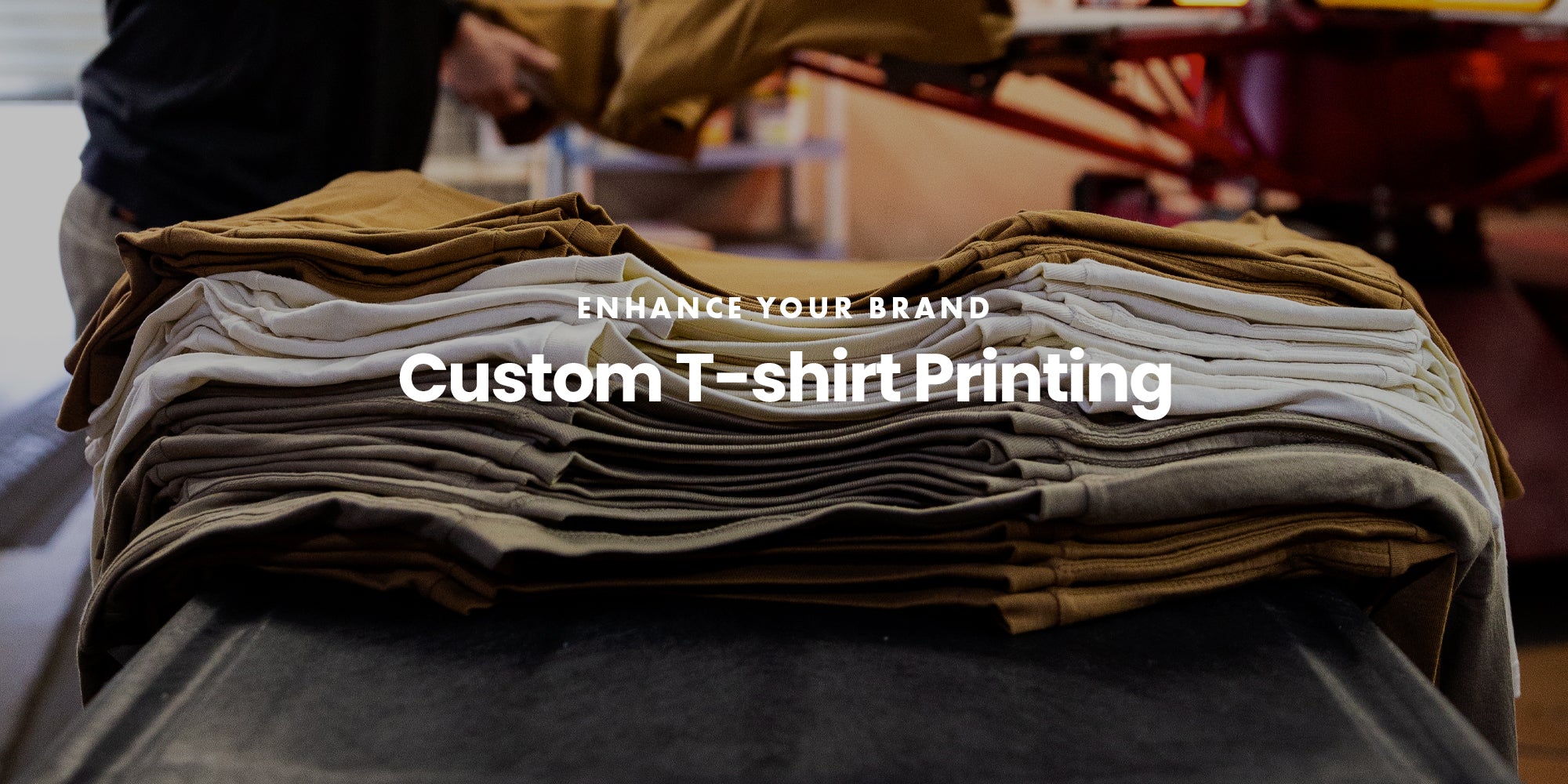Screen Printing Uncovered: Every Little Thing You Need to Find Out About Tee and Garment Printing Strategies
Display printing is a fascinating approach that incorporates art with method, offering endless opportunities for creative thinking. Prepared to check out the essential aspects that make screen publishing an art type?
The Fundamentals of Display Printing: Just How It Works
When you dive into display printing, you'll discover it's both an art and a scientific research. At its core, screen printing involves producing a stencil, or display, that permits ink to go through just in certain areas (screen printing kit). You start by choosing your layout and preparing your display with a light-sensitive emulsion. As soon as you subject this solution to light, it solidifies, leaving your layout as a negative area.
Position the screen over the textile, after that make use of a squeegee to push ink with the display onto the garment. Each action is necessary, and grasping them will certainly boost your display printing skills, changing simple garments into distinct, meaningful pieces.
Kinds Of Screen Printing Strategies
When you comprehend the fundamentals of display printing, it's time to discover the numerous strategies that can raise your layouts. One popular method is traditional display printing, where ink is pressed via a stenciled display.
If you're intending for great details, think about discharge printing. This method eliminates dye from the textile, leaving a soft, vintage look. Another alternative is plastisol printing, understood for its resilience and vivid shades, making it a preferred for numerous brand names. Experiment with halftone printing to produce slope impacts and elaborate designs. Each strategy has its unique beauty, so don't think twice to try them out to discover what fits your style best!
Essential Devices for Display Printing
To accomplish spectacular results in screen printing, having the best tools is basic. You'll require a durable display printing frame, which holds the mesh that moves your design onto the garment. Next, buy premium mops; these are vital for applying ink equally across the screen. You'll likewise call for a good exposure unit to produce your displays, in addition to a washout cubicle for cleansing them after usage. A trusted heat source, like a conveyor clothes dryer or heat press, is important for treating your prints to ensure longevity. Don't forget a correct office, equipped with tables and storage space for your products. Protective equipment, such as masks and handwear covers, will certainly keep you secure from chemicals and inks. With the right tools, you'll be well on your means to producing professional-quality prints.
Selecting the Right Inks and Materials
When picking inks and materials for display printing, you require to think about the kind of ink that functions best for your task. Assume concerning material compatibility to assure your layouts look last and great long. Explore eco-friendly ink choices to make your printing procedure much more sustainable.
Kinds Of Screen Inks
Picking the best screen ink is necessary for accomplishing vibrant, resilient prints that meet your task's requirements. There are numerous sorts of screen inks to examine. Plastisol ink is preferred for its adaptability and simplicity of use, offering excellent shade opacity on dark textiles. Water-based ink, on the various other hand, provides a softer feeling and is environment-friendly, making it excellent for those seeking to lessen their ecological influence. Discharge inks eliminate dye from the textile, causing a soft, vintage look yet need specific handling. Ultimately, specialty inks, such as glow-in-the-dark or metal, can add special effects to your styles. Examine your project demands and pick the ink that lines up ideal with your preferred result.

Textile Compatibility Considerations
Comprehending material compatibility is important for achieving high-grade screen prints, especially since various products respond distinctly to different inks. When selecting inks, think about the fabric kind-- cotton, polyester, or blends. For cotton, water-based inks work well, offering soft qualities and breathability. Polyester, on the other hand, usually needs plastisol inks for much better attachment and vibrant shades. If you're publishing on blends, you might require to utilize a combination of both kinds. Always test your inks on sample fabric to assure they adhere properly and maintain shade integrity. Additionally, remember that textile weight and structure can affect the last result, so picking the appropriate ink and product combo is vital for your project's success.
Eco-Friendly Ink Options
Eco-friendly inks are coming to be a popular choice for display printers who desire to minimize their environmental effect while preserving high quality. When selecting inks, think about water-based inks, which are much less damaging and less complicated to clean up compared to conventional solvents.
Furthermore, try to find inks made from renewable energies, such as soy or vegetable-based alternatives. By selecting the ideal inks and materials, you'll not just develop magnificent layouts yet additionally add to an extra sustainable printing procedure. Make the switch, and your prints will certainly show your dedication to the atmosphere!
Preparing Your Design for Display Printing

File Layout Demands
To assure your style looks vibrant and sharp on material, you'll require to pay close interest to file style requirements for screen printing. Make sure your design has a transparent background to prevent unwanted white sides on your prints. Keep shade modes in mind; CMYK is conventional for display printing, so convert your RGB makes appropriately.
Color Separation Methods
Color separation is a crucial step in preparing your design for display printing, and grasping it can greatly improve your print quality. You'll need to break your design into private colors, as each shade needs a separate display during printing. This precision not only ensures precise color depiction but additionally simplifies the printing procedure.
Resolution and Dimension
Accomplishing the most effective cause display printing begins with assuring your layout has the right resolution and size. Ideally, your art work ought to go to least 300 DPI (dots per inch) for sharp, clear prints. Your last product might look less than professional and pixelated. if you use lower resolution.
When it concerns dimension, think about the measurements of your print location. Layout your artwork to match the final print dimension, ideally producing it in the real dimensions you'll be publishing. By doing this, you'll prevent any unanticipated scaling problems.
Constantly check your layout in both vector and raster formats. Vector graphics can be scaled without losing top quality, making them perfect for display printing. Preparing correctly will assure your style looks amazing on every garment!
Step-by-Step Screen Printing Refine
Screen printing is a vibrant process that enables you to produce vibrant styles on different surfaces. To obtain started, you'll require a display, emulsion, and your picked ink.
Pour ink onto the screen and use a squeegee to push the ink via the stencil onto the textile. Lift the screen very carefully and let the print dry. You've effectively screen printed your layout.
Tips for Effective Screen Printing Projects
While you're diving into your screen printing jobs, keep in mind that prep work is vital to success. Start by gathering all your products-- inks, squeegees, garments, and displays. A tidy office aids prevent undesirable mistakes, so clean up before you begin.
Following, confirm your artwork is high-resolution and properly sized for view it your garment. Test your display for appropriate exposure and tidy it extensively to avoid smudges. When blending your inks, comply with the supplier's guidelines to accomplish the appropriate uniformity.
During printing, apply also stress with your squeegee for consistent results. Don't hurry; take your time to confirm each print fulfills your standards. After printing, allow your garments completely dry completely before managing or packaging them.
Lastly, always maintain an example of your help future referral. This way, you can examine your progress and improve your techniques with time. Delighted printing!

Regularly Asked Inquiries
Just how Lengthy Does It Require To Establish a Screen Printing Task?
Setting up a screen printing work typically takes around 30 mins to an hour. You'll prepare the displays, mix inks, and change the press. The time differs based upon intricacy and experience, so remain organized!
Can I Publish on Various Material Enters Utilizing the Same Technique?
Yes, you can publish on various textile kinds using the same method, however you'll require to change your settings and inks. Some materials absorb ink differently, so trying out warranties the very best outcomes for each and every material.
What Are Usual Errors to Avoid in Display Printing?
When display printing, prevent usual errors like using the incorrect ink, ignoring appropriate exposure times, or avoiding pre-press checks. Always examine your configuration and maintain tidy screens to assure high quality outcomes each time.
Just How Can I Properly Tidy and Maintain My Display Printing Equipment?
To effectively tidy and maintain your display printing tools, you should on a regular basis wash displays with appropriate solvents, inspect mops for wear, and ensure all devices Click This Link are stored dust-free and dry. Uniformity avoids pricey repair work and improves efficiency.
Is Screen Printing Eco-friendly Contrasted to Other Approaches?
Screen printing can be much more eco-friendly than other methods, specifically if you utilize water-based inks and eco-conscious materials. By selecting lasting materials and methods, you reduce waste and lessen your effect on the planet.
Screen Printing Uncovered: Whatever You Required to Know Concerning T-Shirt and Garment Printing Methods
At its core, screen printing includes developing a pattern, or screen, that allows ink to pass through only in certain locations. Setting the display over the textile, after that make use of a squeegee to press ink through the screen onto the garment. One prominent technique is standard display printing, where ink is pressed via a stenciled display.When selecting inks More hints and products for display printing, you require to take right into account the type of ink that functions ideal for your task.